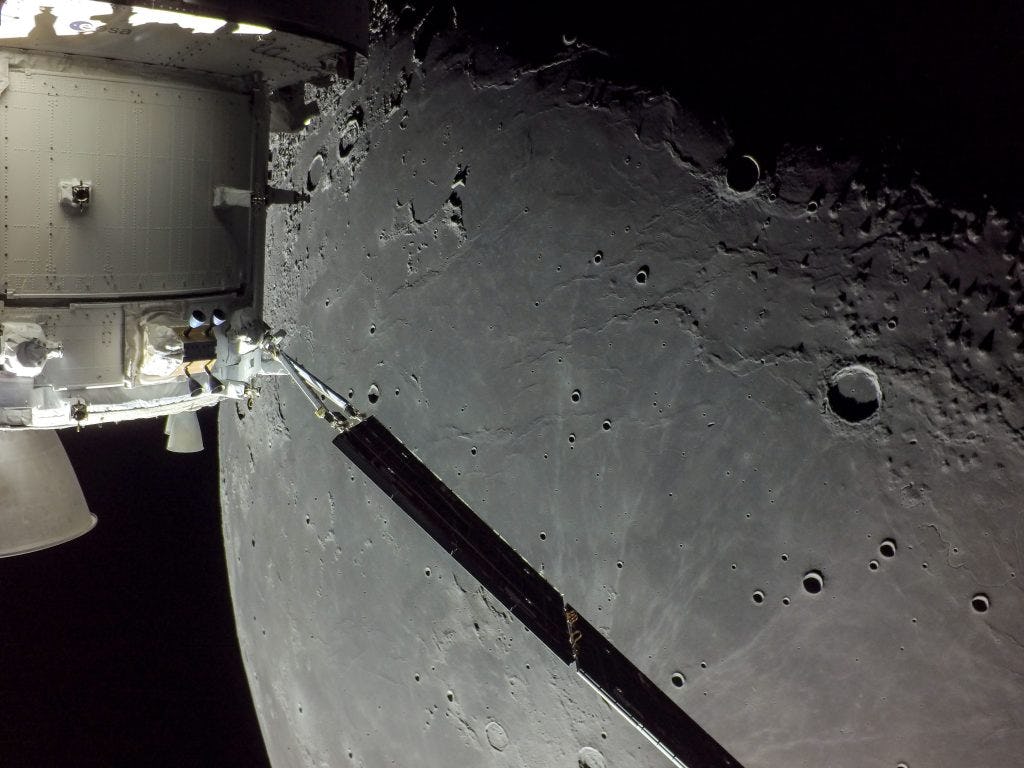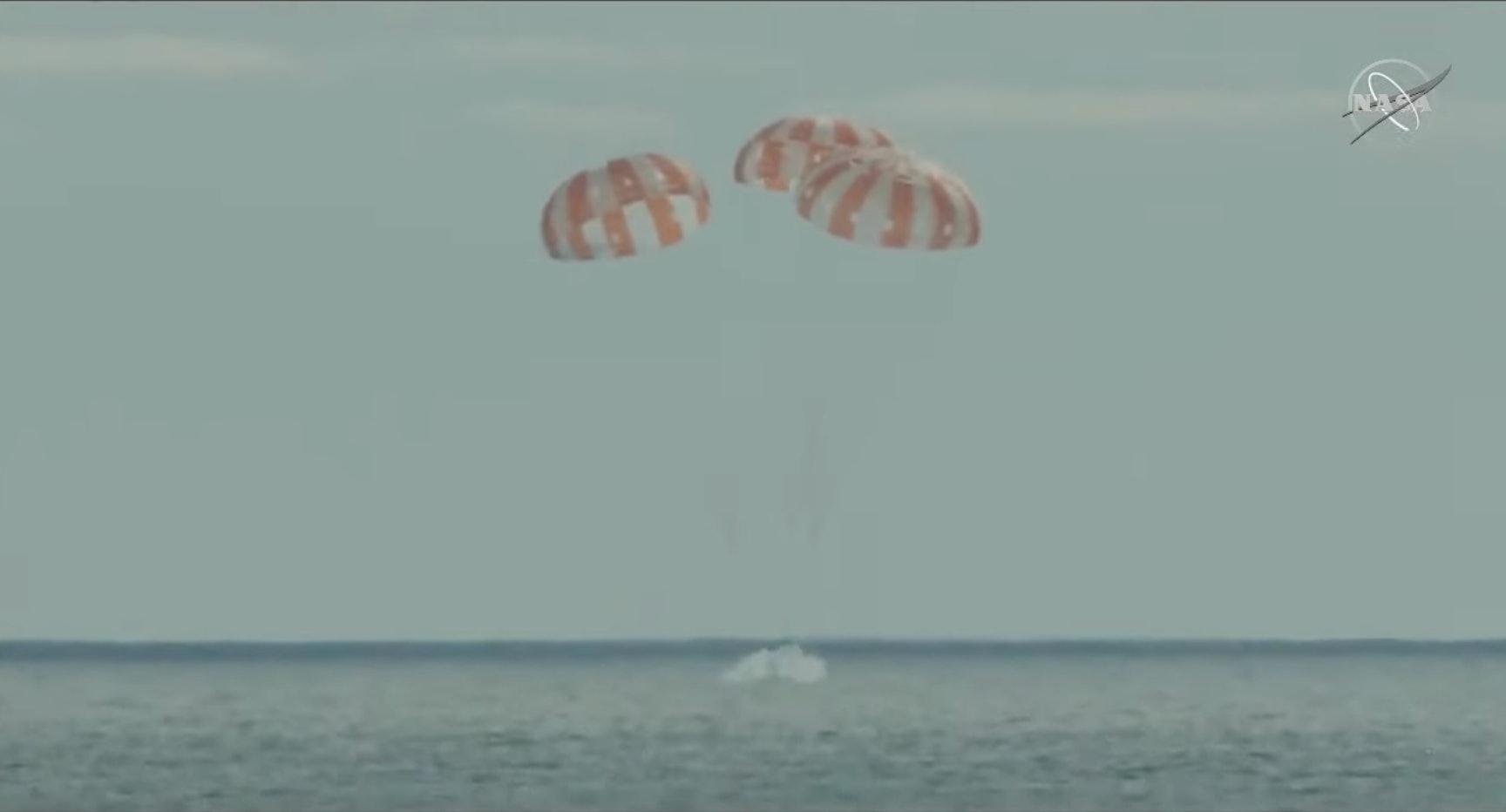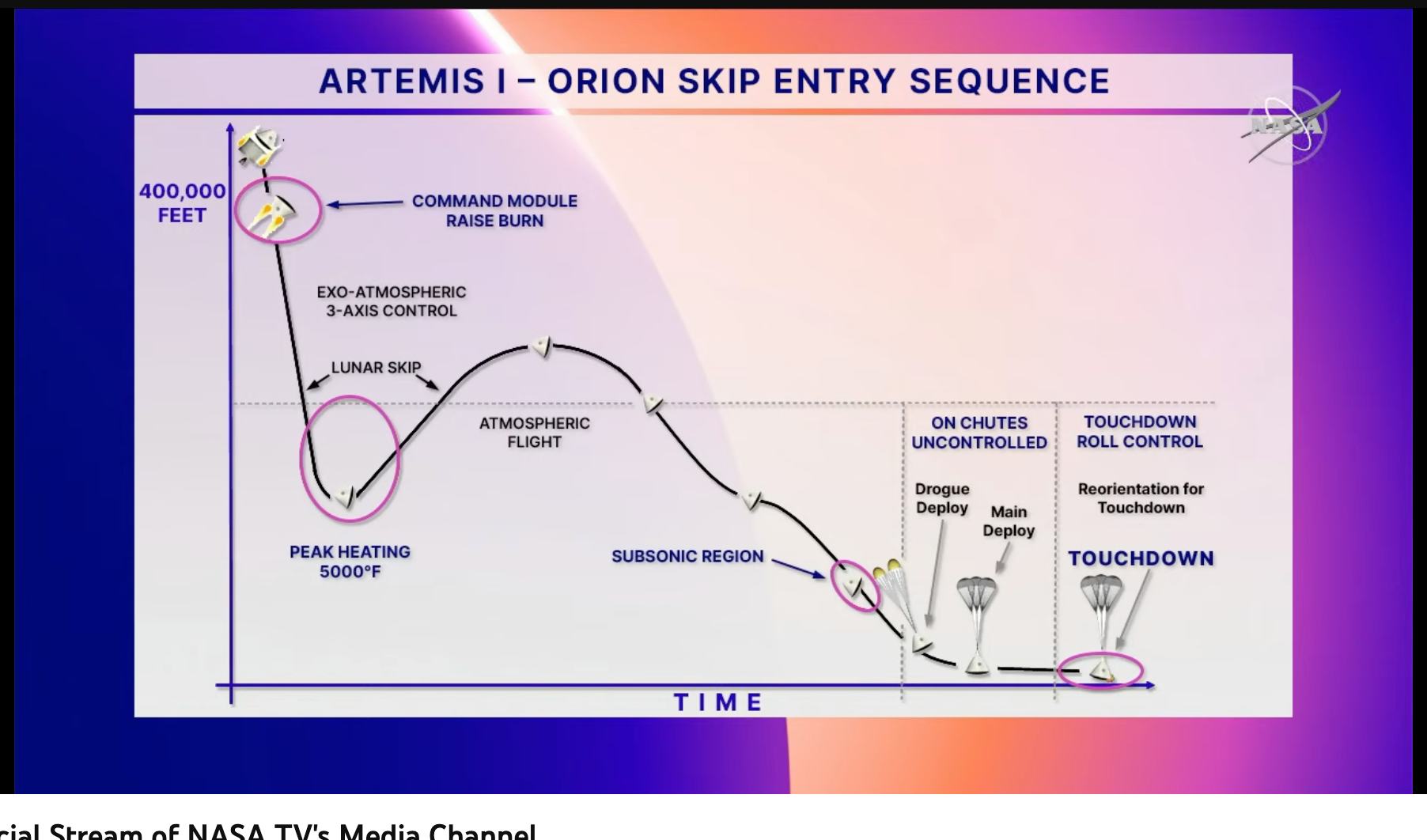
The first leg of NASA’s new ambitious moon program is officially over after an Orion capsule splashed down off the coast of Isla Guadalupe, Mexico.
The capsule was part of the Artemis I mission, which saw the largest rocket NASA has ever built carry a crew of dummies, sensors, and other equipment back. The success of the mission sets the stage for NASA’s future lunar ambitions, which include a space station and a sustained human lunar presence.
The capsule splashed down in the Pacific at 12:40 p.m. Eastern on Sunday, and was hoisted onto the U.S.S. Portland, a naval transport ship. The ship will soon return to the mainland, where NASA personnel will examine the stresses put on the ship during its re-entry.

The re-entry, which commenced about 45 minutes earlier when the craft separated from the Service Module, involves dipping in and out of the atmosphere to reduce speed without endangering the spacecraft, instead skipping it like a stone over the upper atmosphere to slow down before meeting a gentler finale. At maximum speeds, the craft was traveling at speeds of 24,500 mph, or around Mach 32.
Inside, various sensors read the effects of this speed and these forces upon the craft itself as well as the Moonkins, a trio of dummies meant to test the forces the voyage might take on future astronauts. NASA personnel even consulted with NASCAR engineers to build technology to keep astronauts safe during re-entry.

The success of the Artemis I mission sets the path forward for the program. Artemis II is tentatively scheduled to fly sometime in 2024, while Artemis III will fly the subsequent year. While Artemis II will carry humans around the Moon, Artemis III will actually see human boots on lunar soil again for the first time since 1972, when Apollo 17 left the Taurus-Littrow region and returned to Earth.
Artemis I had a rocky start on its road to today’s return. The program suffered numerous delays, including several failed dress rehearsals and a few scrubbed launches. IT finally lifted off from Cape Canaveral in Florida on November 15. It fired its thrusters to leave lunar orbit on December 5 after coming within 80 miles of the Moon for a little gravity assist.







